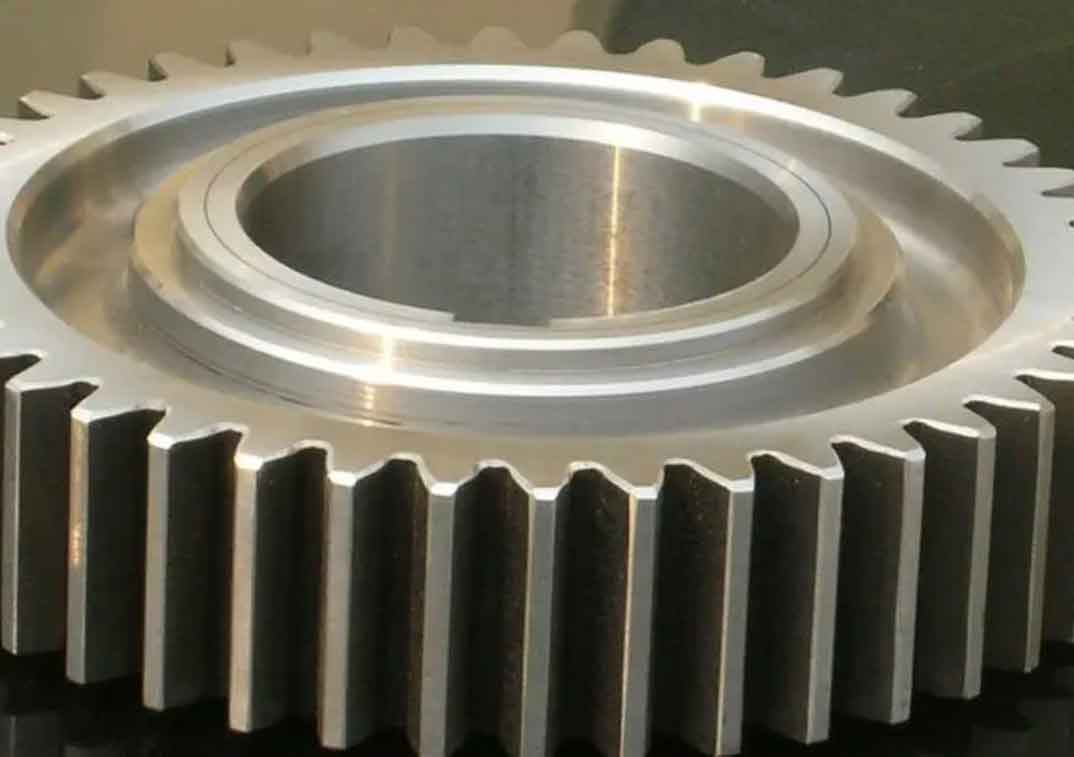
Troubleshooting common issues in spur gear systems is crucial for maintaining their operational integrity and longevity. Here’s a detailed guide on identifying and addressing frequent problems that occur with spur gear:
1. Excessive Wear
Symptoms:
- Premature wear of spur gear teeth.
- Thinning of spur gear teeth which may lead to breakage.
Causes:
- Inadequate lubrication leading to increased friction.
- Overloading beyond spur gear’s design capacity.
- Poor quality or inappropriate material choice.
Solutions:
- Ensure proper lubrication practices, using the right type and amount of lubricant.
- Check and adjust loads to prevent overloading.
- Consider upgrading to more suitable materials or heat-treated spur gear for enhanced wear resistance.
2. Gear Teeth Breakage
Symptoms:
- Sudden increase in noise.
- Vibration and jerking motions in the machinery.
Causes:
- Excessive load causing stress beyond spur gear teeth’s strength.
- Material defects such as cracks or inclusions.
- Improper spur gear alignment or installation.
Solutions:
- Review and adjust the operational loads to within safe limits.
- Replace defective spur gear and ensure high-quality replacements.
- Realign and properly install spur gear to ensure even load distribution.
3. Noise and Vibration
Symptoms:
- Increased operational noise.
- Unusual vibrations during spur gear operation.
Causes:
- Misalignment of spur gear axes.
- Uneven or worn teeth surfaces.
- Loose spur gear mountings or bearings.
Solutions:
- Check and realign spur gear axes for proper engagement.
- Resurface or replace worn gears.
- Tighten and secure all mountings and check bearings for wear and replacement if necessary.
4. Overheating
Symptoms:
- Spur gear becoming excessively hot to the touch.
- Discoloration of spur gear teeth due to heat.
Causes:
- Insufficient or ineffective lubrication.
- Overloading or excessive friction.
Solutions:
- Enhance lubrication systems; consider using lubricants with better high-temperature properties.
- Assess and optimize spur gear loading and operation speeds to reduce friction.
5. Corrosion
Symptoms:
- Rust or corrosion on spur gear surfaces.
- Pitting on spur gear teeth.
Causes:
- Exposure to corrosive environments or chemicals.
- Inadequate protection or material selection for the operating conditions.
Solutions:
- Use corrosion-resistant materials or coatings.
- Implement environmental controls such as dehumidifiers or chemical barriers.
6. Efficiency Loss
Symptoms:
- Decrease in power transmission efficiency.
- Increased energy consumption of the system.
Causes:
- Wear and tear reducing the effective contact between spur gear teeth.
- Misalignment causing poor engagement.
Solutions:
- Regular maintenance and replacement of worn gears.
- Ensure precise alignment during spur gear setup and periodic checks.
Conclusion
Regular maintenance, including proper lubrication, load management, and periodic inspections, are vital for preventing many common issues with spur gear. When troubleshooting, a systematic approach should be adopted—identify symptoms, diagnose the cause, and implement the appropriate solutions. This proactive approach can minimize downtime and extend the life of spur gear systems, ensuring smooth and efficient operations.
